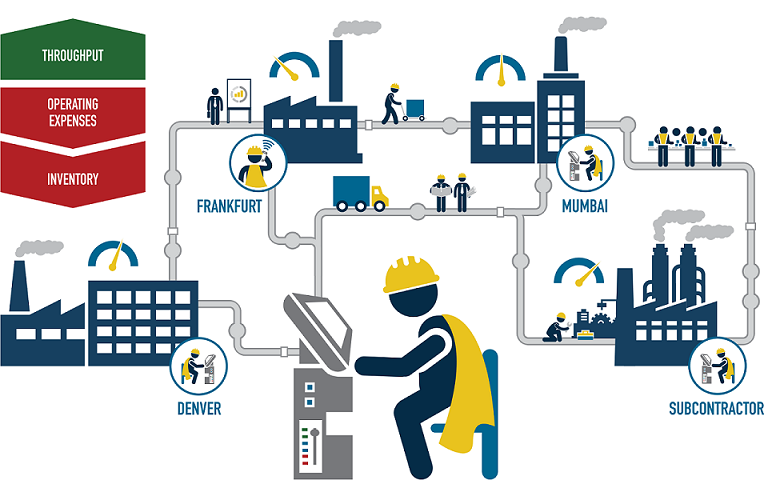This begins a weekly series on the concept of a Superplant. Every Monday will be a new entry in this ongoing series.

Across the world, manufacturing companies are struggling to keep up with demand and new obstacles in the supply chain. Many of these companies face a common challenge: they have finished goods stuck at one factory. All of their other components are half-finished and lost in different warehouses. This is an example of a poorly integrated schedule for a company with multiple plants.
When company factories are reconfigured to function as individual workstations, your plant is on the way to becoming a Superplant. The term “Superplant” enhances plant efficiency by focusing on three key areas:
- Multi-Plant Planning
- Multi-Sourcing
- Subcontracting
This comprehensive article will cover the topic of Superplants and how this concept can be combined with Advanced Planning and Scheduling (APS) software to optimize workspaces in the manufacturing industry.
Multi-Plant Planning
Multi-Plant Planning, also known as “multi-site,” is software functionality that manages processes in various sites. This provides alternatives and chooses resources among alternative routings to give the best decision under a particular scenario of where to produce. Single-plant planning, which most software is designed for, cannot facilitate communication and functionality across multiple factories. With so many manufacturing companies expanding their resources, one plant no longer keeps up with demand.
The Planning Release strategy is core to how Multi-Plant Planning works. This sequential approach, incorporating supply planning first, means that plant managers have more control over the planning horizon. See the image below for a visual interpretation of how Multi-Plant Planning with the Planning Release strategy works.

Multi-plant capable software must do the following:
- Alternate Routings on Multiple Sites: Multi-Plant planning treats resources (materials, labor, etc.) and all plants like they belong to a single group. This is the core concept behind the word “superplant.”
- Makes Decisions Across Multiple Scenarios: The software needs to be able to handle scheduling for every site. Therefore, each schedule should function individually AND as part of a whole.
Multi-source Planning
Multi-Source Planning is centered on the idea that software system has the ability to choose from sources of supply.
Subcontracting
Subcontracting, often mistaken for contract manufacturing, is when goods are produced by the contracted manufacturer but management responsibilities are shared between multiple other companies. Outsourcing of production is not new in the manufacturing space. The Superplant methodology includes these instances where a product might be made and shipped overseas.
PlanetTogether as the Superplant Application
Many software applications cannot offer the same solution as APS, because they cannot settle conflicts between plants. Non-APS platforms often treat plants and factories as independent resources. As a result Non-APS software cannot manage plants with routings in multiple locations and factories. PlanetTogether APS software is a solution to this problem and incorporates the Superplant methodology into its design. 
Manufacturing companies and factories choose PlanetTogether APS software for its adjustable duration-based optimizer, ability to handle process industry requirements, flexibility with data maintenance, and its user interface. PlanetTogether considers equipment and employees as resources. If a production asset requires scheduling, it is defined as a resource inside PlanetTogether APS.
Advanced Planning and Scheduling Software
Advanced Planning and Scheduling (APS) software has become a must for modern-day manufacturing operations due to customer demand for increased product mix and fast delivery combined with downward cost pressures. APS can be quickly integrated with ERP/MRP software to fill gaps where these systems lack planning and scheduling flexibility and accuracy. Advanced Planning and Scheduling (APS) helps planners save time while providing greater agility in updating ever-changing priorities, production schedules, and inventory plans.
- Create optimized schedules balancing production efficiency and delivery performance
- Maximize output on bottleneck resources to increase revenue
- Synchronize supply with demand to reduce inventories
- Provide company-wide visibility to capacity
- Enable scenario data-driven decision making
Implementation of Advanced Planning and Scheduling (APS) software will take your manufacturing operations to the next level of production efficiency, taking advantage of the operational data you already have in your ERP.
Come back next Monday for another entry in this ongoing series.





















LEAVE A COMMENT